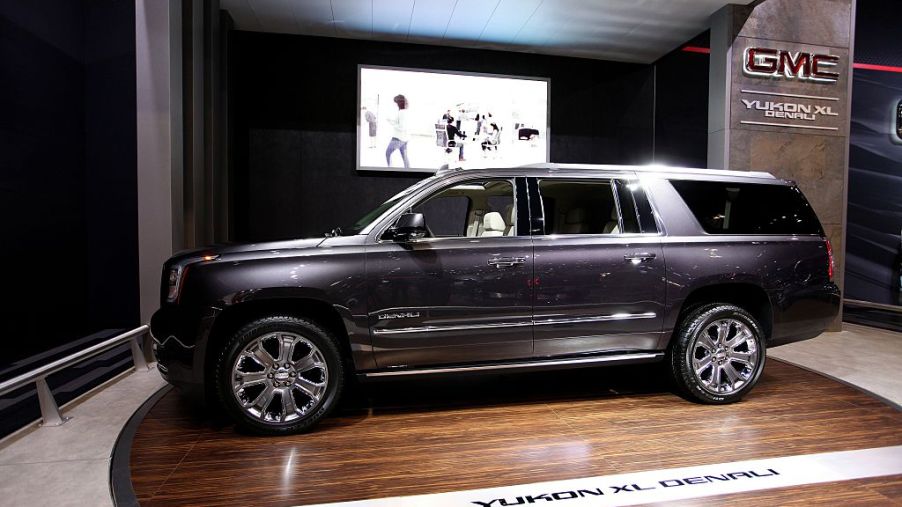
The 2020 GMC Yukon XL Is the Worst Large SUV of the Year
The large SUVs that barely fit into our garages have entered the marketplace and competition is fairly close. The Ford Expedition receives the highest score in its class, from Consumer Reports, followed by the Toyota Sequoia. The GMC Yukon XL falls to dead last on the list with a score of 59. The GMC Yukon landed in fourth place.
Consumer Reports aren’t all that pleased with GMC’s Yukon XL offering this year. They recommended looking elsewhere if you’re interested in getting one of these larger-sized SUVs. Here’s what their review of the Yukon XL had to say about the 2020 model.
2020 GMC Yukon XL handling and ride
Driving is relatively smooth and comfortable on roads without hazardous potholes. When it comes to street surfaces that are less than stellar, the suspension might get a little bouncy.
The higher Yukon XL trims come with the magnetic ride control that keeps the SUV handling the drive smoothly. But, the lower trims, like the SLE and SLT, don’t have the ride control feature. So, the ride becomes pretty stiff and it can feel rubbery in some situations.
Emergency handling falls short as well. The larger the SUV, though, the harder it can be to keep the vehicle from rolling over when going at the higher speeds. Consumer Reports tested the Yukon XL with avoidance maneuvering.
During their evaluation, they determined that this SUV could go as high as 45 mph and still perform safely as needed. While it’s a decent speed, its competitors perform better when it comes to emergency handling. For example, the Ford Expedition tested at 47 mph.
2020 GMC Yukon XL Fuel economy and braking
Braking in the Yukon XL is in the average range. Stopping distances for a large SUV like this measured 139-feet when going 60 mph on dry surfaces. When they tested the Yukon going 60 on wet surfaces, the SUV took 148-feet to come to a complete stop.
Competitors of the Yukon performed relatively the same, with a few that took longer and one, the Nissan Armada that stopped 6-feet shorter. The main issue, they had with the brakes, though was the pedal. They reported that they felt the pedal modulation seemed a bit dubious since it required more effort to use than other SUVs.
Fuel economy was extremely disappointing. With modern technology, you’d think they’d be able to get a few more mpg than what they really have. Obviously, you can’t expect top of the line ratings in fuel economy with large vehicles like this, but GMC could have gotten a bit better ratings.
For highway driving the Yukon gets 23 mpg with only a 16 mpg combined. However, it matches most of its competitors except for the Toyota Sequoia, which gets 15 mpg combined and the Nissan Armada, which only gets 14 mpg.
Predicted reliability
Based on the history of the Yukon XL its reliability gets a rating of 3 out of 5 from Consumer Reports. The worst problems that plagued this SUV include the transmission, body integrity, and climate system.
Some models saw a few minor engine problems and even some paint issues in the earlier years of the Yukon XL production. The suspension in the 2015 model had some bad vibration felt when going speeds of 60-80 mph, according to CarComplaints.com.
When owners took it in, they were basically told that it was normal with these large SUVs, but even bigger trucks never had that vibration issue. Many owners of the 2015 model stated that they had problems with the electronics, mainly the brake lights working only intermittently.
Often Consumer Reports will state what version they think you should get of a vehicle they reviewed. For the 2020 Yukon XL, all they said was that they don’t recommend any version, you should look toward an alternative like the Suburban. This model scored average ratings and came in dead last, so it’s probably best to avoid it, take their advice, and look for something else.


